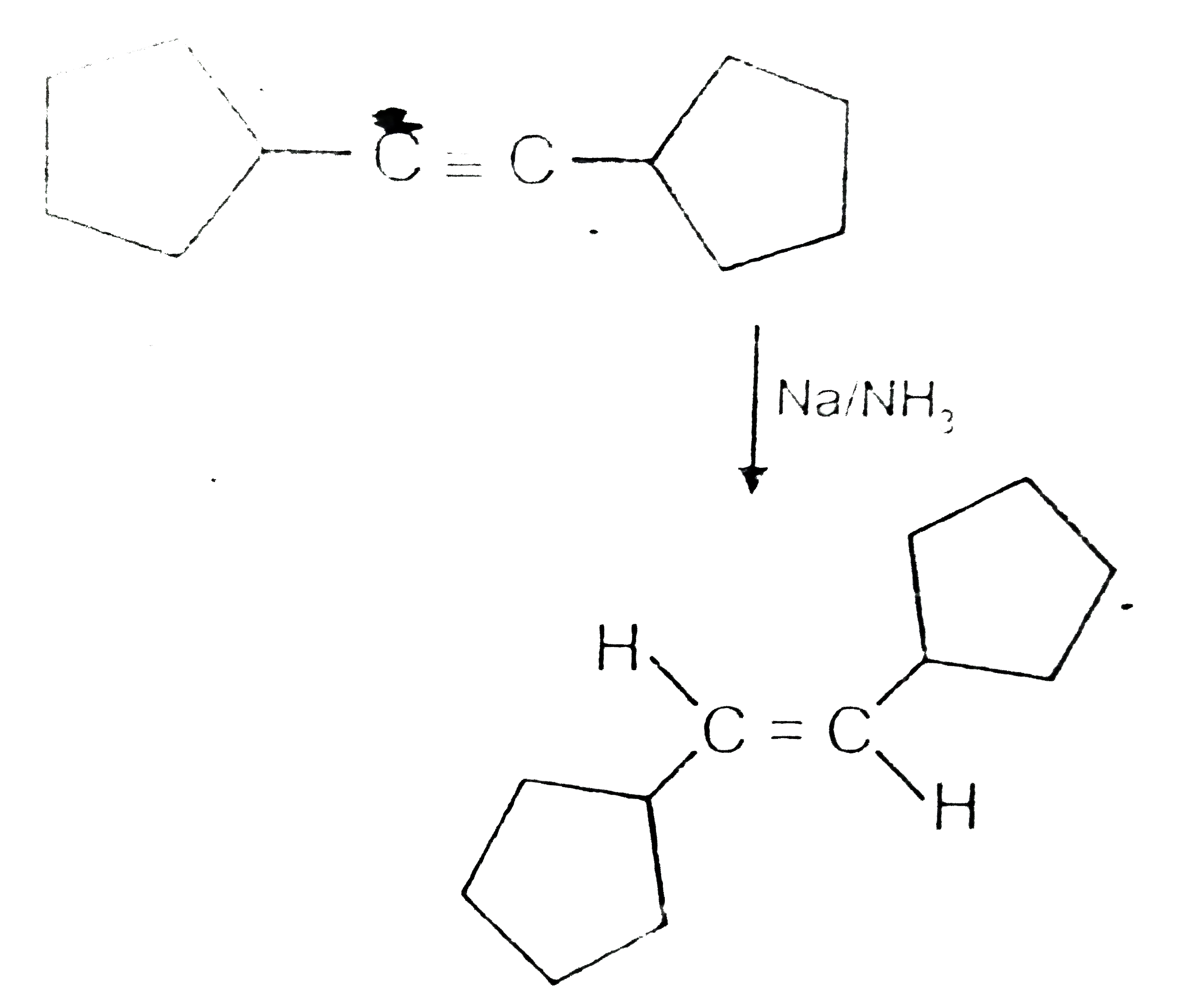What are reactive intermediates ? How are they generated by bond fission ?
Step-by-Step Text Solution
Step 1: Definition of Reactive Intermediates
Reactive intermediates are transient chemical species that are formed during the course of a chemical reaction. They exist for a short period and are not stable enough to be isolated. Examples of reactive intermediates include carbocations, carbanions, and free radicals.
Step 2: Types of Reactive Intermediates
There are three main types of reactive intermediates:
1. Carbocations: Positively charged carbon species with three bonds and an empty p-orbital.
2. Carbanions: Negatively charged carbon species with four bonds and a lone pair of electrons.
3. Free Radicals: Neutral species with an unpaired electron, making them highly reactive.
Step 3: Generation of Reactive Intermediates by Bond Fission
Reactive intermediates are generated through the process of bond fission, which can occur in two ways:
- Homolytic Bond Fission: This occurs when a covalent bond breaks evenly, resulting in the formation of two free radicals. Each atom retains one of the shared electrons.
Example: In the homolytic fission of a bond in a molecule like CH3-CH2-CH3 (propane), the bond between two carbon atoms can break, resulting in two free radicals (CH3• and CH2•).
- Heterolytic Bond Fission: This occurs when a covalent bond breaks unevenly, resulting in the formation of a cation and an anion. One atom retains both of the shared electrons, while the other atom takes none.
Example: In the heterolytic fission of a bond in a molecule like CH3Cl (methyl chloride), the bond between carbon and chlorine can break, resulting in a carbocation (CH3+) and a chloride ion (Cl-).
Step 4: Summary
In summary, reactive intermediates are crucial species formed during chemical reactions, and they can be generated through bond fission, either homolytic or heterolytic. Understanding these intermediates helps in predicting the course and mechanism of chemical reactions.
Reactive intermediates are transient chemical species that are formed during the course of a chemical reaction. They exist for a short period and are not stable enough to be isolated. Examples of reactive intermediates include carbocations, carbanions, and free radicals.
There are three main types of reactive intermediates:
1. Carbocations: Positively charged carbon species with three bonds and an empty p-orbital.
2. Carbanions: Negatively charged carbon species with four bonds and a lone pair of electrons.
3. Free Radicals: Neutral species with an unpaired electron, making them highly reactive.
Reactive intermediates are generated through the process of bond fission, which can occur in two ways:
- Homolytic Bond Fission: This occurs when a covalent bond breaks evenly, resulting in the formation of two free radicals. Each atom retains one of the shared electrons.
Example: In the homolytic fission of a bond in a molecule like CH3-CH2-CH3 (propane), the bond between two carbon atoms can break, resulting in two free radicals (CH3• and CH2•).
In summary, reactive intermediates are crucial species formed during chemical reactions, and they can be generated through bond fission, either homolytic or heterolytic. Understanding these intermediates helps in predicting the course and mechanism of chemical reactions.
Topper's Solved these Questions
- ORGANIC CHEMISTRY-SOME BASIC PRINCIPLES TECHNIQUESBOOK - PRADEEPCHAPTER - ORGANIC CHEMISTRY-SOME BASIC PRINCIPLES TECHNIQUESEXERCISE - Additional Questions (Long Answer Type Questions)
10 Videos
- ORGANIC CHEMISTRY-SOME BASIC PRINCIPLES TECHNIQUESBOOK - PRADEEPCHAPTER - ORGANIC CHEMISTRY-SOME BASIC PRINCIPLES TECHNIQUESEXERCISE - Analytical Questions and Problems with Answers/Solutions (Questions)
16 Videos
- ORGANIC CHEMISTRY-SOME BASIC PRINCIPLES TECHNIQUESBOOK - PRADEEPCHAPTER - ORGANIC CHEMISTRY-SOME BASIC PRINCIPLES TECHNIQUESEXERCISE - Additional Questions (Very short Answer Questions)
41 Videos
- HYDROGEN BOOK - PRADEEPCHAPTER - HYDROGEN EXERCISE - COMPETITION FOCUS (Assertion-Reason Type Questions) Type 2
15 Videos
- P-BLOCK ELEMENTS (NITROGEN FAMILY)BOOK - PRADEEPCHAPTER - P-BLOCK ELEMENTS (NITROGEN FAMILY)EXERCISE - Competition focus jee(main and advanced)/ medical entrance special) (VIII. Assertion-Reason Type Questions)
10 Videos
Similar Questions
Using curved arrows rotation,show the formation of reactive intermediates when the following covalent bonds undergo heterolytic fission.
(a) CH3−CN
(b) CH3−Cu
View SolutionUsing the curved-arrow notation, show the formation of reactive intermediates when the following convalent bonds undergo heterolytic cleavage :
(a) CH3−S−CH3
(b) CH3−CN
( c) CH3−Cu .
View Solution
Knowledge Check
Carbenes are the reactive intermediates in:
ACarbyamine reactionBReimerTiemann reactionCHofmann's bromamide reactionDWitting reactionWhich reactive intermediate is formed during the condensation reaction between acetaldehyde and formaldehyde ?
A:−CH2CHOB+CH2CHOC+CH2OHD:−CH3CHO.When chloroform reacts with NaOH an important reactive intermediate is formed . Type of reaction involved and formed intermediates are respectively .
AE2 and CI−ΘC∣CI−CIBβ− Elimination and CI−C:∣CICE2 and CI−C:∣CIDα− Elimination and CI−C:∣CI
Using the curved-arrow notation, show the formation of reactive intermediates when the following convalent bonds undergo heterolytic cleavage :
(a) CH3−S−CH3
(b) CH3−CN
( c) CH3−Cu .
View SolutionConsider the following reaction
 The reactive intermediate invovled in this reaction is
The reactive intermediate invovled in this reaction is
View SolutionReaction Intermediate General Point
View SolutionAnswer the following :
(a) How many types of fission are possible of a covalent bond?
(b) how many types of ions are formed by heterolytic fission and what are their names?
(c) What are the names and nature of the parts formed by homolytic fission?
(d) How many electrons are present in the valence shell of the carbon atom of the carbonium ion?
(e) How many electrons are present in the valence shell of carbon atom of the carbanion ion?
(f) Name the attacking reagents and give their nature.
(g) Write the names of the parts obtained when C−Cl bond of ethyl chloride undergoes heterolytic fission.
(h) What is the major factor that influences the relatives stabilities of carbocations, carbanions and free radicals.
View SolutionHybridisation Of Reactive Intermediate
View Solution
